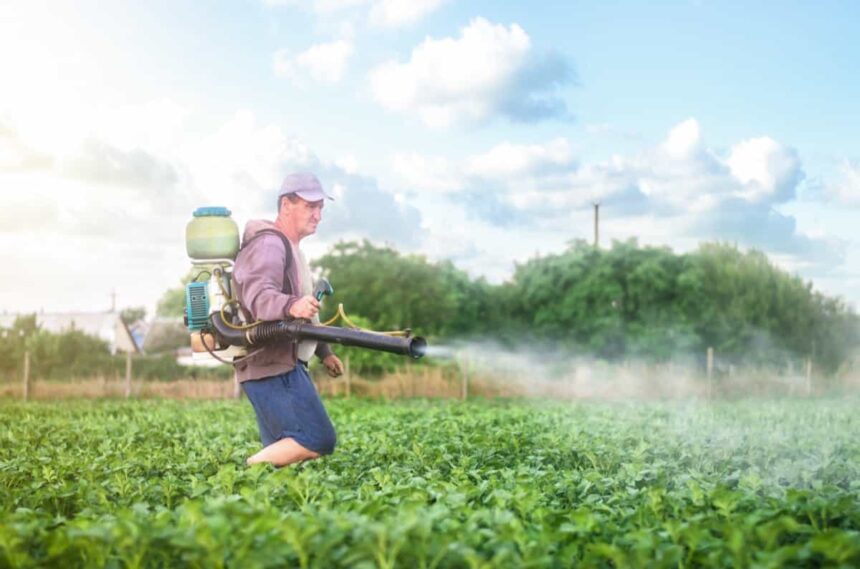Pesticides are essential tools used to protect crops from various pests and diseases. These substances help farmers control insects, weeds, fungi, rodents, bacteria, nematodes, mites, mollusks, viruses, algae, predators of pests, and larvae of insects that damage plants’ leaves or stems. Pesticides protect crops from pests and diseases, thereby ensuring higher yields and food security.
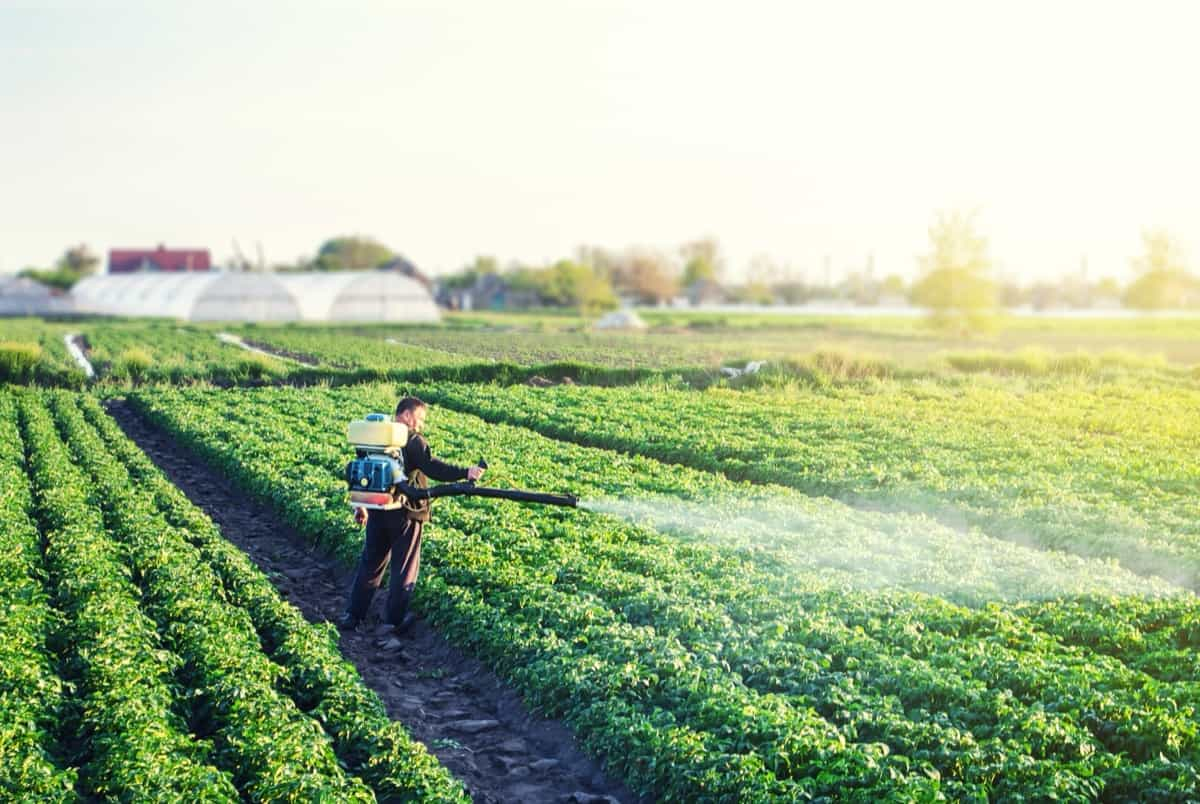
Insecticides
Insecticides are a crucial tool in agriculture, helping farmers combat pesky insects that can destroy crops. These pesticides specifically target insects, disrupting their life cycles and preventing infestations. Farmers use insecticides to protect their plants from damage caused by pests like beetles, caterpillars, and aphids.
There are different types of insecticides available, each designed to target specific groups of insects. Some insecticides work on contact, while others are systemic and get absorbed by the plant to kill insects feeding on them. While insecticides play a vital role in crop protection, farmers must use them responsibly. Overusing or misuse of insecticides can lead to environmental contamination and harm beneficial insects like pollinators.
Herbicides
Herbicides play a crucial role in controlling weeds that can compete with crops for sunlight, nutrients, and water. These substances are designed to target and eliminate unwanted plants without harming the desired crops. Herbicides come in various forms, such as pre-emergent or post-emergent, selective or non-selective, and contact or systemic. Selecting the right type of herbicide based on factors like the weed species type present and the stage of their growth.
By effectively managing weed populations, herbicides help farmers increase crop yields and maintain the quality of their produce. Additionally, using herbicides can reduce the manual labor required for weeding tasks, ultimately saving time and money for farmers.
It is important to follow safety guidelines when applying herbicides to ensure they are used properly and do not negatively impact human health or the environment. Proper application techniques can maximize the effectiveness of herbicides while minimizing any potential risks associated with their use.
Fungicides
Fungicides play a crucial role in agriculture by protecting crops from fungal diseases that can devastate yields. These specialized pesticides target fungi specifically, preventing them from spreading and causing harm to plants. Fungicides help farmers maintain the health and vigor of their crops by controlling fungal populations. This is essential for ensuring food security and economic stability within the agricultural sector. Different types of fungicides are used based on the specific fungi posing a threat to crops.
In case you missed it: How to Unlock Key Technologies to Improve Food Security: Reduce Pesticide Use and Enhance Crop Climate-Resilience
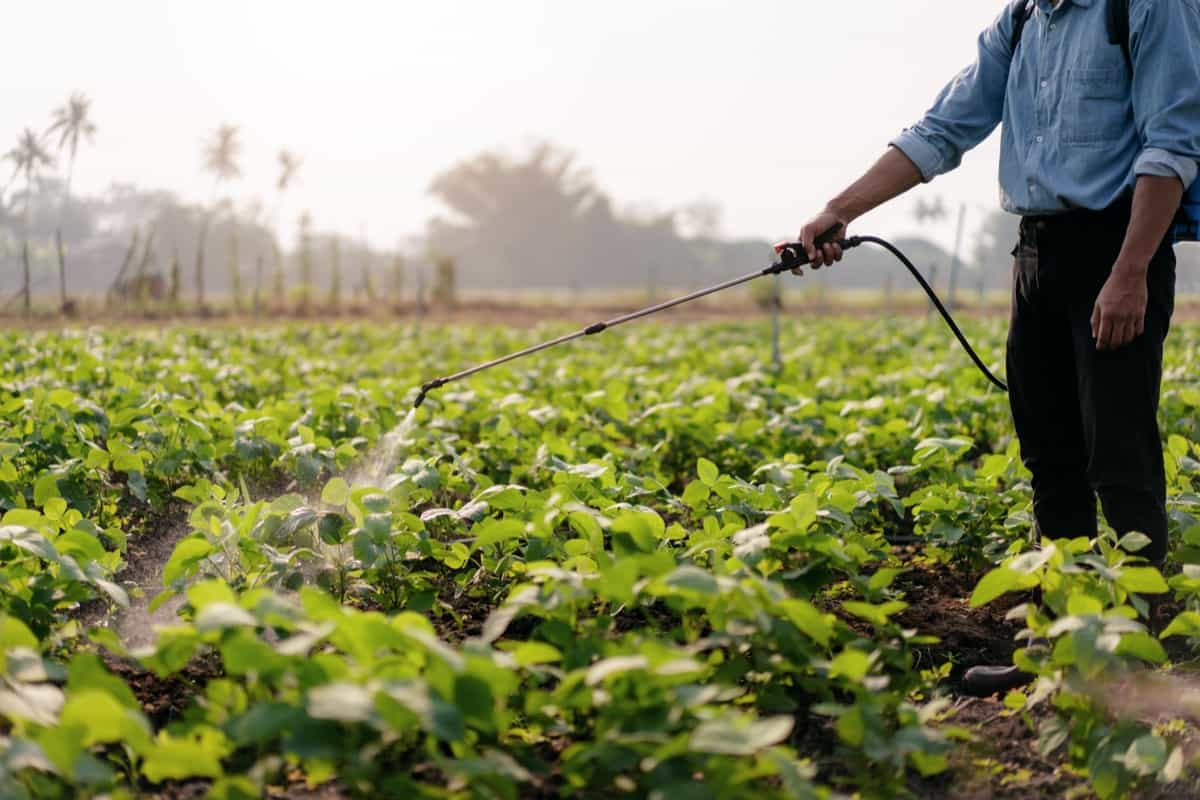
They are applied preventatively or curatively, depending on the crop’s susceptibility to fungal infections and environmental conditions conducive to disease development. Fungicides come in various forms—some are sprayed onto plants, while others can be incorporated into the soil or seed treatment to protect against soil-borne pathogens. Farmers should use fungicides responsibly, following proper application guidelines to maximize efficacy while minimizing environmental impact.
Rodenticides
Rodenticides are pesticides specifically designed to control and eliminate rodent populations in agricultural settings. These substances are crucial for protecting crops and stored grains from damage caused by rodents. Rodents can quickly multiply and affect a farmer’s livelihood, making rodenticides an essential tool in pest management. There are different types of rodenticides available, each with its own mode of action to target rodents effectively.
Some rodenticides work by causing internal bleeding, while others disrupt the rodents’ nervous system, leading to their demise. Farmers must use these products carefully to minimize risks to non-target species and the environment. The use of rodenticides requires proper knowledge and training to ensure their effectiveness while minimizing negative impacts. Integrated pest management strategies often include the strategic placement of bait stations or traps containing rodenticides to control populations effectively.
Bactericides
Bactericides play a crucial role in agriculture by targeting harmful bacteria that can devastate crops. These pesticides are specifically designed to combat bacterial diseases, ensuring the health and yield of plants. By effectively controlling bacterial infections, bactericides help farmers protect their investments and maintain a sustainable agricultural system. The key benefit of using bactericides is their ability to prevent the spread of diseases caused by bacteria.
This proactive approach helps farmers mitigate risks associated with crop losses due to bacterial infections. Additionally, bactericides contribute to overall plant health by suppressing harmful bacteria that can weaken or kill crops. When it comes to application methods, bactericides can be sprayed on leaves or soil, depending on the specific type of bacteria targeted. By following proper usage instructions and safety measures, farmers can maximize the effectiveness of bactericides while minimizing any potential environmental impact.
Nematicides
Nematicides are a crucial type of pesticide used in agriculture to control nematodes, microscopic worms that can wreak havoc on plant roots. If left unchecked, these pesky pests can cause stunted growth, wilting, and yield loss in crops. By utilizing nematicides, farmers can protect their plants from nematode damage and ensure healthier crop yields.
In case you missed it: 20 Best Homemade Fertilizers for Money Plant: DIY Recipes and Application Methods
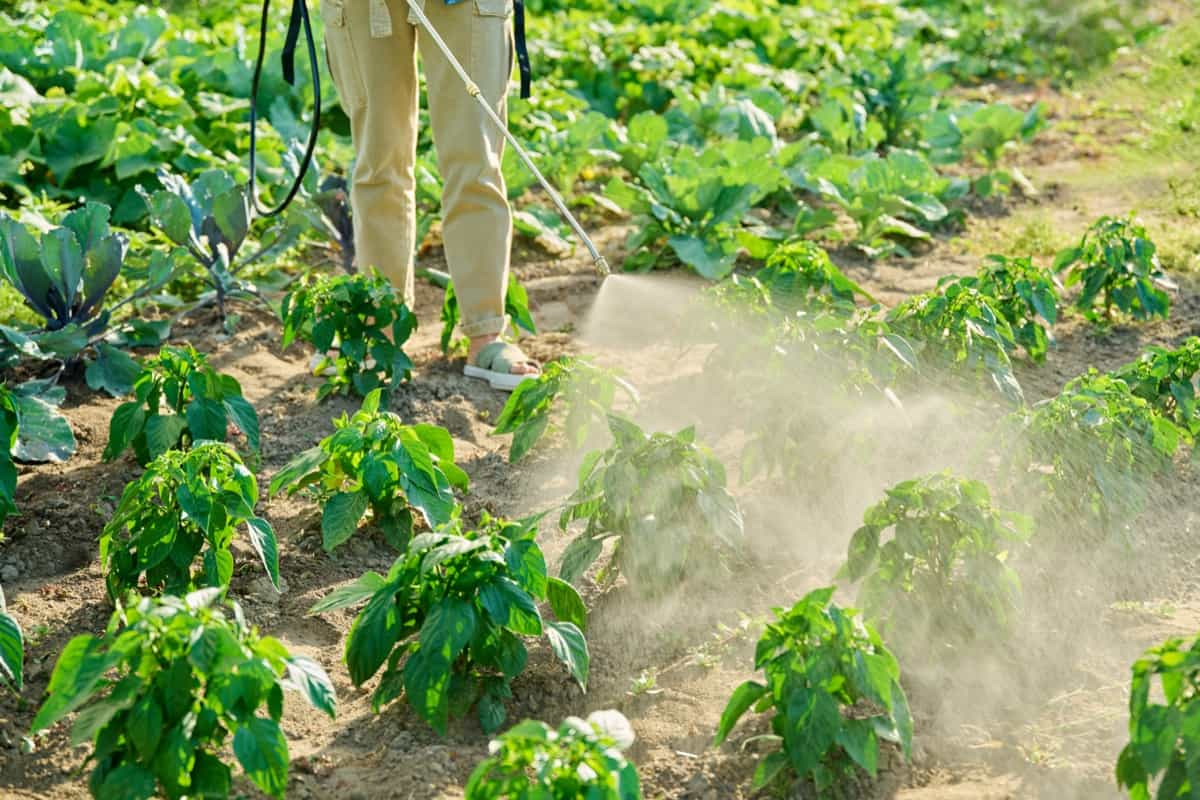
These pesticides work by either killing the nematodes directly or disrupting their ability to reproduce, effectively reducing their population in the soil. There are various types of nematicides available on the market, each with its unique mode of action and application methods. Some nematicides are applied as soil treatments before planting, while others can be injected into the root zone during cultivation.
Miticides
Miticides are a type of pesticide specifically designed to target mites, tiny arachnids that can wreak havoc on crops. These pests may be small in size, but their impact on agriculture can be significant. Miticides work by disrupting the life cycle of mites, preventing them from causing further damage. Miticides help farmers protect their crops and maximize yields by effectively controlling mite infestations. These pesticides play a crucial role in integrated pest management strategies alongside other types of pesticides, such as insecticides and fungicides.
Farmers often rely on miticides to combat spider mites, russet mites, and other damaging species that can devastate plants if left unchecked. When used properly and responsibly, miticides can be valuable tools for maintaining crop health and ensuring agricultural productivity. However, it’s essential to follow recommended application guidelines to minimize environmental impacts and preserve beneficial organisms in the ecosystem.
Molluscicides
Molluscicides are a type of pesticide specifically designed to target mollusks such as snails and slugs. These pesky creatures can wreak havoc on crops by feeding on leaves, stems, and fruits. Molluscicides work by either directly killing the mollusks or deterring them from feeding on plants. The common active ingredient in molluscicides is metaldehyde, which disrupts the normal functioning of a mollusk’s nervous system and ultimately leads to its demise.
Another alternative is iron phosphate, which is considered safer for non-target organisms like pets and wildlife. When using molluscicides, it’s essential to follow label instructions carefully to ensure efficacy while minimizing environmental impact. Applying these pesticides during periods of increased mollusk activity can help protect crops effectively.
Virucides
Virucides are a crucial type of pesticide used in agriculture to control viruses that can wreak havoc on crops. These specialized chemicals target and eliminate harmful viruses that threaten plant health, ultimately helping farmers protect their yields. By effectively combating viral infections, virucides play a key role in maintaining crop productivity and ensuring food security.
Unlike other pesticides that target insects or weeds, virucides specifically focus on eradicating viruses, which can be invisible threats to crops. Farmers rely on these powerful chemicals to prevent the spread of viral diseases among plants and safeguard their harvests from potential devastation. With the constant evolution of agricultural practices and the emergence of new viral strains, the use of virucides continues to be essential for modern farming techniques.
Algicides
Algicides play a crucial role in controlling and preventing algae growth. By effectively managing algae populations, farmers can ensure healthier crop growth and higher yields. Algicides come in various formulations, including liquid concentrates or granular forms that are easily applied to water bodies such as irrigation systems or ponds. They work by disrupting algae’s photosynthesis process, ultimately leading to their demise without harming other aquatic life.
In case you missed it: Soil Solarization for Vegetables and High-Value Crops: A Non-Chemical Method for Weed Control
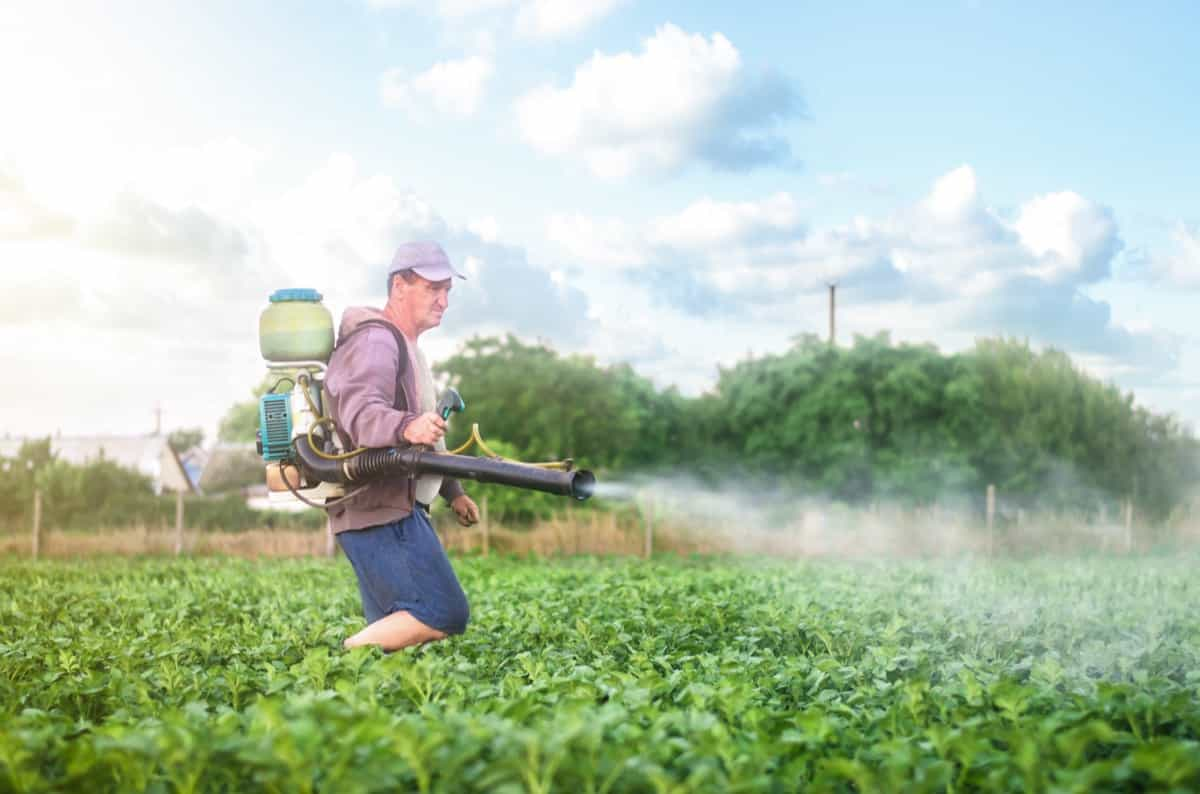
The use of algicides is particularly important in agricultural settings where standing water is common, as excessive algae can lead to nutrient imbalances. By incorporating algicides into their pest management strategies, farmers can maintain a balanced ecosystem within their fields while promoting optimal crop health.
Predacides
Predacides are a lesser-known type of pesticide used in agriculture. These specialized chemicals target predatory animals that can harm crops, such as birds or mammals. By controlling these pests, Predacides help protect the harvest and ensure higher yields for farmers. Unlike other pesticides that focus on insects or fungi, Predacides specifically address larger threats to agricultural production.
They play a major role in integrated pest management strategies by managing the populations of predators that could cause significant damage to crops. The use of predacides requires careful consideration to minimize any potential impact on non-target species and ecosystems. Farmers must follow specific guidelines for their application to maintain a balance between protecting crops and preserving biodiversity.
Larvicides
Larvicides are a type of pesticide specifically designed to target and eliminate insect larvae, preventing them from developing into mature pests. These chemicals disrupt the growth and life cycle of mosquitoes, flies, and other insects that breed in standing water. By targeting the larval stage, larvicides help control insect populations before they become a nuisance or health hazard.
The use of larvicides is crucial in reducing the spread of diseases that are transmitted by mosquito bites. Public health agencies often deploy larvicides in areas where stagnant water accumulates to prevent outbreaks of these serious illnesses. Unlike some pesticides that pose risks to non-target organisms like bees or birds, larvicides are more specific in their action against immature insects. This targeted approach minimizes harm to beneficial species while effectively managing pest populations at their most vulnerable stage.
Defoliants
Defoliants are a type of pesticide commonly used in agriculture to strip plants of their leaves. These chemicals work by causing the leaves to drop off, making it easier for farmers to harvest crops like cotton or fruit trees. While defoliants can be effective in speeding up the harvesting process, they have also raised concerns about environmental and health risks. One well-known defoliant is Agent Orange, which was famously used during the Vietnam War as a herbicide but had devastating effects on both humans and the environment.
Today, modern agricultural practices have led to more regulated use of defoliants to minimize negative impacts. Despite their controversial history, defoliants continue to be employed in certain agricultural settings where manual leaf removal is not feasible. It remains crucial for farmers and regulators alike to consider the consequences of using these powerful chemicals on crops and ecosystems.
In case you missed it: Agriculture Drone Subsidy Scheme: Government Kisan Subsidy, License, and How to Apply Online
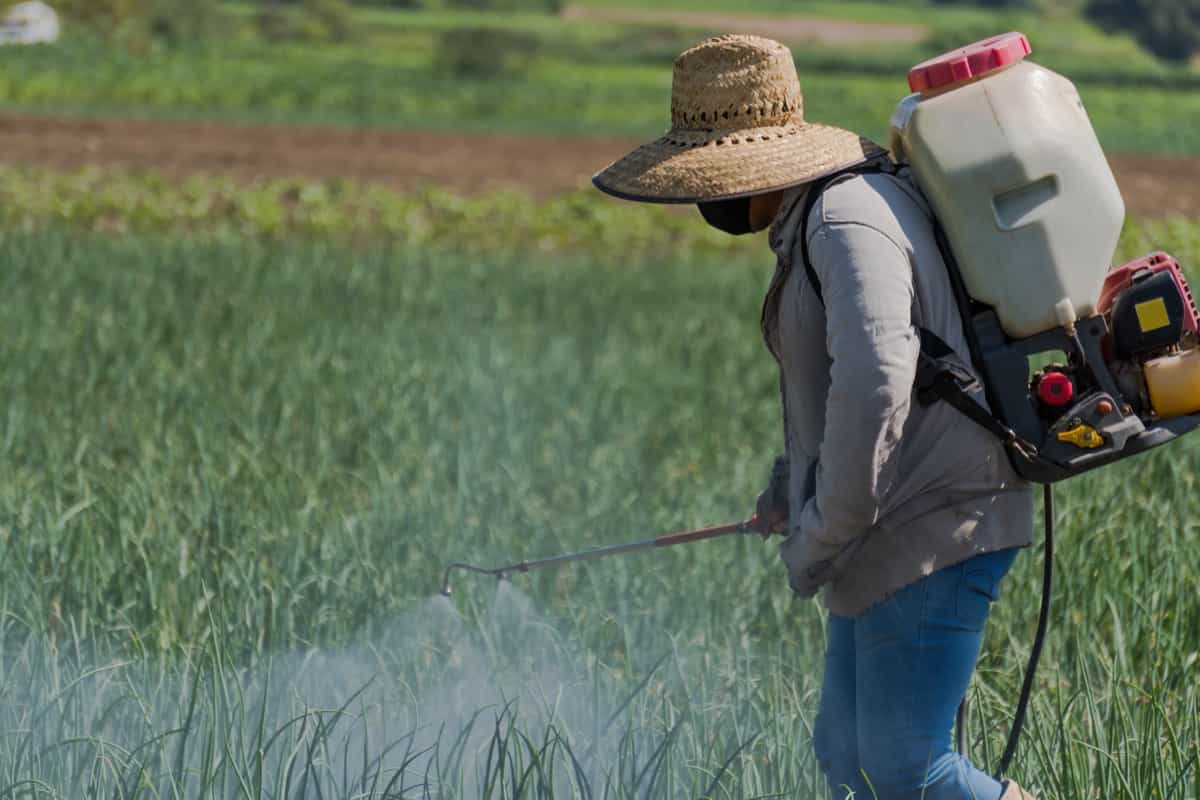
Desiccants
Desiccants are a crucial type of pesticide used in agriculture to dry out plants or pests. They work by absorbing moisture, which ultimately leads to the dehydration and death of the target organisms. These chemicals are often applied in situations where controlling moisture levels is essential for crop protection. The common application of desiccants is in weed control. By drying out unwanted plants, desiccants help farmers manage weed populations without resorting to more harmful pesticides.
This approach can be effective in areas where selective herbicides are required. Additionally, desiccants can also be utilized post-harvest to accelerate the drying process of crops like grains and seeds. This helps prevent mold growth and ensures that harvested products maintain their quality during storage and transportation. Desiccants play a vital role in modern agricultural practices by providing an efficient means of managing moisture levels for both plant protection and post-harvest care.
Pheromone Traps
If you’re looking for an eco-friendly way to deal with pests in agriculture, then pheromone traps might be your new best friend. These traps utilize the power of pheromones – chemicals that insects release to connect. By attracting pests into these traps using synthetic versions of these pheromones, farmers can effectively monitor and control insect populations without resorting to harmful chemical pesticides.
Pheromone traps are species-specific, meaning they target only the particular pest species they are designed for. This targeted approach helps in reducing the overall impact on beneficial insects and the environment. Farmers can use these traps as part of an integrated pest management strategy to track pest populations, determine infestation levels, and implement timely control measures when needed.
In case you missed it: Pest Control Cost Per Acre in India: Organic vs Chemical Cost Comparison
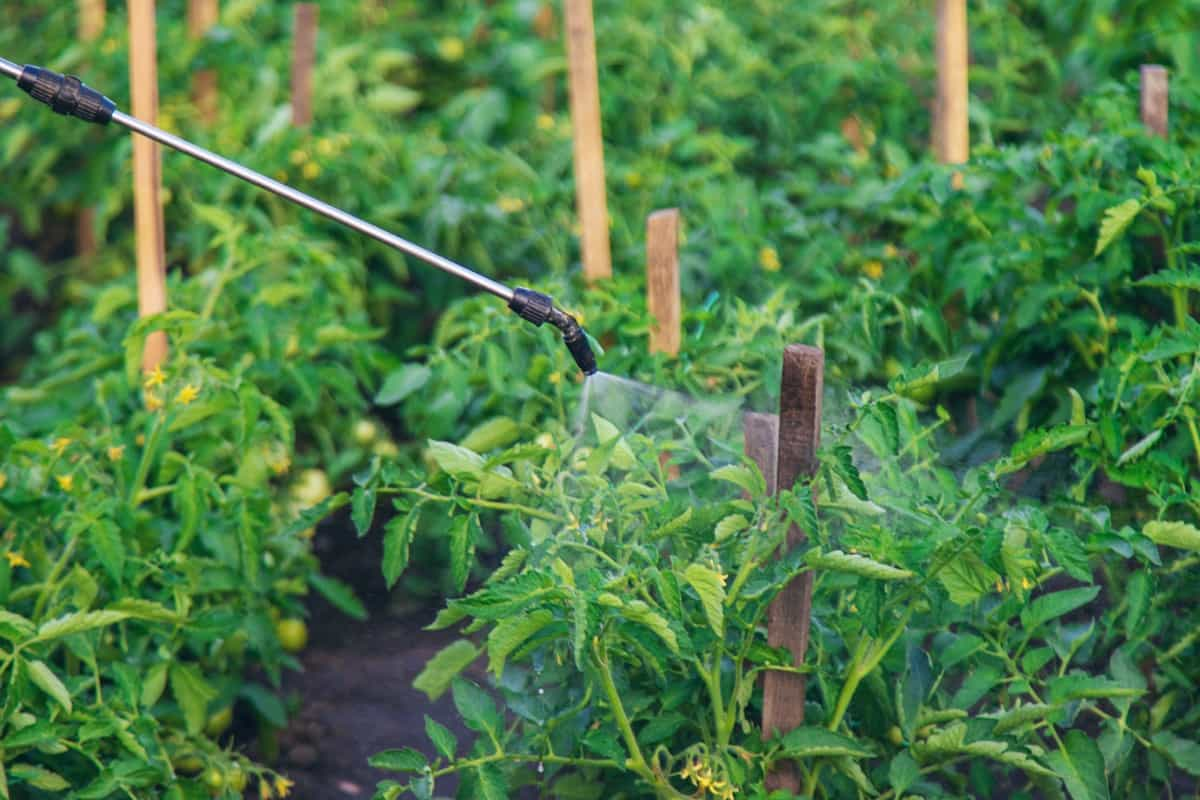
By applying pheromone traps to their farming practices, growers can reduce reliance on traditional pesticides, minimize environmental impact, and maintain crop quality without compromising yields. Pesticides used in agriculture offer a range of benefits that contribute to the efficient production of crops. By controlling insect populations, pesticides protect plants from damage, leading to healthier harvests.
- Ultimate Guide to Natural Vegetable Farming
- Natural Farming for Sustainable Livestock Management
- Dairy Farm Technology in India: The Future of Dairy Husbandry
- Comprehensive Guide to Organic Farming in Villages
- Modern Sheep Farming Technology: The Future of Sheep Husbandry
- Goat Farming Technology: The Future of Goat Husbandry
- How to Build a Low-budget Goat Shed: Cheap Ideas and Tips
- Goat Farming Training Programs in India: A Beginner’s Guide
- Types of Pesticides Used in Agriculture: A Beginner’s Guide
- Economical Aquaculture: A Guide to Low-Budget Fish Farming
- 15 Common Planting Errors That Can Doom Your Fruit Trees
- How to Make Houseplants Bushy: Effective Tips and Ideas
- Innovative Strategies for Boosting Coconut Pollination and Yield
- Pollination Strategies for Maximum Pumpkin Yield
- The Complete Guide to Chicken Fattening: Strategies for Maximum Growth
- Natural Solutions for Tulip Problems: 100% Effective Remedies for Leaf and Bulb-Related Issues
- Revolutionizing Citrus Preservation: Towards a Healthier, Greener Future
- Natural Solutions for Peony Leaf and Flower Problems: 100% Effective Remedies
- Maximizing Profits with Avocado Contract Farming in India: A Comprehensive Guide
- Natural Solutions for Hydrangea Problems: 100% Effective Remedies for Leaf and Flowers
- The Ultimate Guide to Choosing the Perfect Foliage Friend: Bringing Life Indoors
- From Sunlight to Sustainability: 15 Ways to Use Solar Technology in Agriculture
- The Ultimate Guide to Dong Tao Chicken: Exploring from History to Raising
- The Eco-Friendly Makeover: How to Convert Your Unused Swimming Pool into a Fish Pond
- Mastering the Art of Delaware Chicken Farming: Essentials for Healthy Backyard Flocks
- 20 Best Homemade Fertilizers for Money Plant: DIY Recipes and Application Methods
- How to Craft a Comprehensive Free-Range Chicken Farming Business Plan
- Brighten Your Flock: Raising Easter Egger Chickens for Beauty and Bounty
- How to Optimize Your Poultry Egg Farm Business Plan with These Strategies
- Subsidy for Spirulina Cultivation: How Indian Government Schemes Encouraging Spirulina Farmers
- Ultimate Guide to Raising Dominique Chickens: Breeding, Feeding, Egg-Production, and Care
- Mastering the Art of Raising Jersey Giant Chickens: Care, Feeding, and More
- Ultimate Guide to Raising Legbar Chickens: Breeding, Farming Practices, Diet, Egg-Production
- How to Raise Welsummer Chickens: A Comprehensive Guide for Beginners
- How to Protect Indoor Plants in Winter: A Comprehensive Guide
- Ultimate Guide to Grow Bag Gardening: Tips, Tricks, and Planting Ideas for Urban Gardeners

